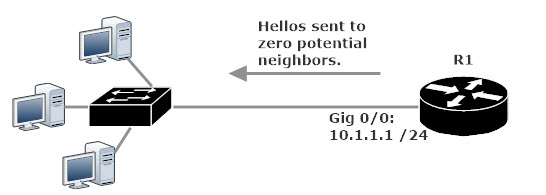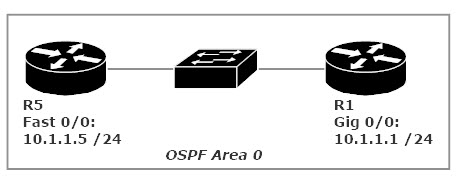CCNA 200-301 Practice Exam: Memory And OSPF
Today’s daily CCNA Practice Exam tests your knowledge of RAM, ROM, NVRAM, and Flash Memory, along with a little OSPF thrown in for good measure. Let’s get right to it!
Tackle this CCNA Practice Exam on timer values, too!
Question 1:
Which of the following loses its contents on a reload?
A. Read-Only Memory
B. Non-Volatile Random Access Memory
C. Flash Memory
D. Random Access Memory
Question 2:
What is the purpose of “always” at the end of the default-information always command?
A. It allows the router to accept a default route under any circumstances.
B. It allows the router to generate a default route, regardless of whether it actually has one in its own routing table.
C. It allows the router to generate a default route even if it is not a neighbor with the OSPF-speaking router that needs it.
D. It allows the router to accept a default route from a non-OSPF neighbor.
Question 3:
RAM contains which of the following?
A. The bootstrap startup program.
B. The running configuration file.
C. The IOS Images.
D. The startup configuration file.
Question 4:
What particular OSPF feature will prevent this interface from sending hellos while still allowing the network it’s part of to be advertised? (Short answer, no choices given.)

Question 5:
What’s the default OSPF dead time on the network type shown here?

A. 10 seconds
B. 40 seconds
C. 60 seconds
D. 180 seconds
The answers are below this quick and important message!
Over 100,000 students joined my previous CCNA Video Boot Camp on Udemy — and now it’s your turn to join the latest version!
Chris Bryant’s CCNA Video Boot Camp
Check my Udemy Coupon Page for the latest coupon you can use to get an even lower price!
And since flash cards have been scientifically proven to be the most efficient way to retain and apply knowledge, you’ll want to be here on October 23 to get your hands on my new CCNA 200-301 Flash Cards!

And now… the answers!
Answer 1: D. Random Access Memory (RAM) loses its contents on a reload.
Answer 2: B. The default-information originate command allows a router to advertise a default route even though that same router doesn’t have a default route in its own IP routing table.
Answer 3: B. RAM contains the running configuration file. The bootstrap startup program is found in ROM, the IOS Images are kept in Flash, and the startup configuration file is in NVRAM.
Answer 4: Using the passive interface feature in OSPF allows an interface to suppress hello transmission while still allowing the network that interface is part of to be advertised successfully. You can verify a passive interface (and a lot of other things!) with show ip ospf interface.

Answer 5: B. That’s an OSPF broadcast network, which has a default hello time of 10 seconds and a default dead time of 40 seconds.
Thanks for taking today’s test! You’ll find a new one every day (with occasional Saturdays off) on my CCNA Practice Exam Page, and I look forward to seeing you in my CCNA Video Boot Camp on Udemy. Enjoy your day!
Chris B.




